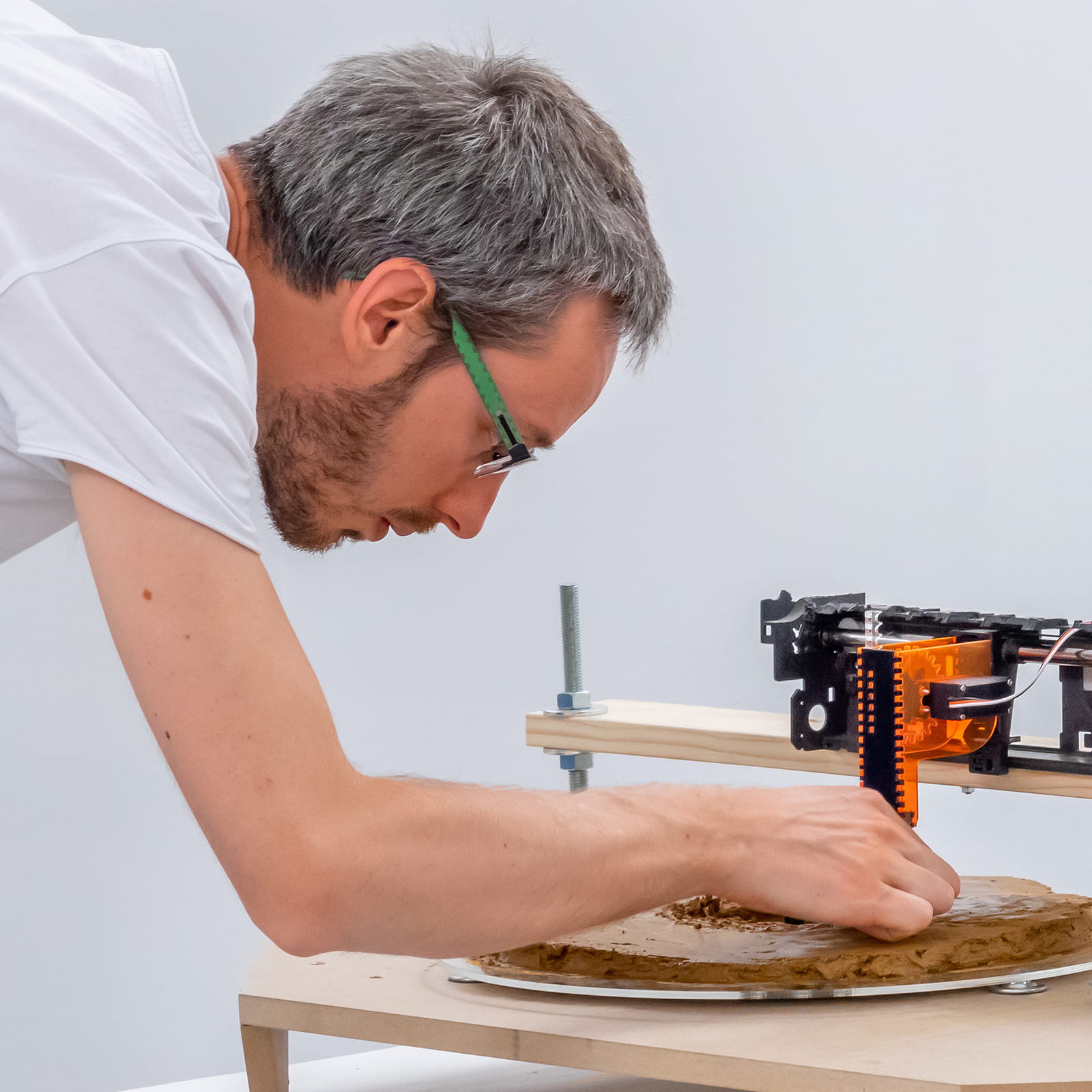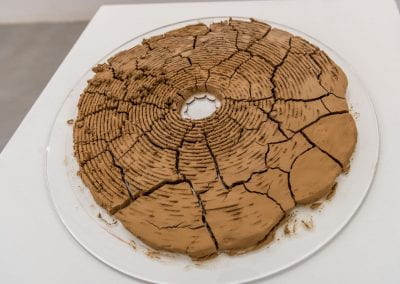
Sound Fossils
By Alessandro Perini | Professional (International category)
“One aspect of the Fourth Industrial Revolution which really impacted on me is the ubiquity and capillarity, of technology, which nowadays almost merge with our bodies. After a period of research about sound as vibration, I worked on the idea of integration between sound devices and objects, natural elements, human bodies: technology can be as pervasive as sound, which can make any elastic body vibrate. My three “Sound Fossils”, presented at the NTU GDAP, propose a way in which a certain sound or vibration, coming from a geomorphic force, could be embedded as a visible trace into a geologic formation.”
~ Alessandro Perini
Sound Fossils is a series of three site-specific installations produced in residency at the Spinola Banna Foundation in Italy, in 2018. This project explored the area of Pianalto, a clay-rich area in Piedmont, from the point of view of geological forces considered as sound. A partial seismography representing the movement of the earth along the east-west axis, registered in 1887 in Moncalieri, was used to program a machine that shook a certain quantity of liquid clay for days. Subsequently, the clay dried, incorporating the data from the 1887 earthquake to create Sound Fossil I: Piano. To create Sound Fossil II: Spiral, a groove was engraved into a clay disc, representing the vibration recorded in the soil (seismography) as the clay was extracted by hand. Man is thus a force that modifies the landscape, like any other natural agent.
Location
ADM Gallery 1
About the Artist

Alessandro Perini works with sound and music, but also with site-specific sound installations, with wearables, with listening experiences. He likes to experiment with found materials and spaces, inventing new artifacts devoted to particular listening modes, new tools to understand and listen to the environments in which we dwell.
Through a site-specific approach, he aims at embedding his intervention within the space, integrating the act of listening in the landscape or environment, thus creating listening spots which let us experience spaces from a different perspective. In many of his works, listening does not simply happen with one’s ears, but with one’s skin, bones, eyes as well.












